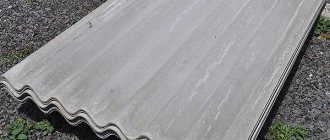Cypress spurge
The perennial herbaceous plant is considered an excellent repellent against moles. It should be planted around the perimeter of the site and then it will not interfere with the harvest and will enhance protection against rodents. It is important to take into account that milkweed fruits contain toxins, and children and pets should be protected from such a plant.
The height of cypress milkweed reaches 30 cm. This makes it a useful garden decoration. Lush bushes of rich green color have up to 12 peduncles.
How to deal with moles in the cellar?
During their underground wanderings, moles may quite accidentally stumble upon supplies of vegetables in the cellar. As a result, potatoes and other vegetables stored in the cellar can be seriously damaged and spoiled.
The best way in this situation would be to fumigate the room with sulfur dioxide, by burning purchased “Climate” sulfur bombs or setting fire to powdered sulfur. However, this method is only possible if there are no vegetables in the cellar and when the residents of the house leave it for several days.
In connection with the above, it is better to use other gentle folk remedies against moles.
Castor bean
Moles cannot tolerate castor oil, which is extracted from castor beans, because its seeds contain from 40 to 60% of the substance. Therefore, the plant will serve as a good method for preventing the appearance of moles. Star-shaped foliage will also become an unusual decoration for the site. In summer you can admire the reddish inflorescences. It is worth planting castor oil around the perimeter of the area that needs to be protected.
When growing a plant, it is important to remember that all its parts contain the protein alkaloid ricinin, which is poisonous to living things. Castor bean is popular in gardens as an ornamental plant that grows quickly. It is good in single planting or in groups of up to 5 pieces. Not suitable for decoration in mixed plantings.
Other unpleasant odors
A good folk remedy for expelling moles using plants is elderberry and gooseberry. But it is not their planting that will help, but the vegetative parts that are cut up and thrown into a hole - then the animals are irritated by the smell and they leave their home.
Moles also cannot tolerate some essential oils . This method is more of a prevention and does not claim to be the most effective. Apply undiluted essential oil of mint or eucalyptus to cotton balls and place them along the passages and burrows.
There is an opinion among gardeners and gardeners that moles cannot tolerate coffee grounds. So the coffee can be collected and poured into the mountains.
Another method that is used for preventive purposes is spoiled food . These are rotten fish or eggs that are thrown into the water. It’s unpleasant for both people and the mole.
Marigold
Many gardeners grow unpretentious marigolds in the country and do not think about the fact that the strong aroma of flowers brings practical benefits. It is this that repels moles, shrews, mole crickets and other pests. Therefore, plants should be planted around the perimeter of the site or as often as possible.
Another method of using them will require collecting all the marigolds from the flower beds in the fall, drying them and crushing them. When digging, such dust is introduced into the soil of greenhouses and other necessary places.
Other means of controlling moles in a summer cottage:
I'll tell you how to get rid of moles in your dacha using sound effects. Animals run away from sharp and monotonous sound stimuli. Summer residents just need to “turn on” their imagination and invent their own way of fighting the pest.
Hollow “pipes” of reed stems can be inserted into a large number of mole hills. Do this on a slope, just first find the entrance hole with a shovel. The underground inhabitants will not like the howling of the wind.
Insert metal pins around the perimeter of a small area. A height of 1 m is sufficient. Place a hollow tin (beer can) on each pin. Even a light wind is enough to make the cans sway and rattle, driving away the moles.
A very effective and equally noisy method is firecrackers. Such an explosion near one of the molehills discourages people from returning to the site for a long time. Just warn your neighbors before the fireworks. Give it a try.
Imperial hazel grouse
Beautiful bulbous plants have drooping yellow or orange buds. Repels moles and shrews with a pungent odor. For humans, the aroma may be weak and barely noticeable, but animals sense it keenly.
The perennial plant can grow up to 1.5 m and has large inflorescences. A good solution would be to plant along the fence. Daffodils can replace imperial hazel grouse. Rodents also do not like their roots, but the flowers will decorate the dacha.
The benefits and harms of moles
Mole: helper and pest.
Moles destroy the larvae of various pests located underground and thus aerate the soil. They bring soil rich in various microelements to the surface.
But passages and holes dug in the area interfere with soil cultivation. Moles make passages between the roots of plants, and can lead to their death. Mice or rats can also live in mole holes.
Siberian Scilla
The perennial bulbous plant resembles bells with its drooping small buds. The most advantageous places for planting are under trees, large bushes and in clearings: areas where Siberian scilla grows may look blue during its flowering. If planted around the perimeter of the garden, you will get a spectacular and bright design.
- Author: Zimina Tatyana
Rate this article:
- 5
- 4
- 3
- 2
- 1
(25 votes, average: 4.2 out of 5)
Share with your friends!
How to prevent moles from appearing
To prevent pests from settling in your area, follow simple rules:
- Too wet soil causes wormholes to rise closer to the surface. Therefore, limiting the amount of moisture in the area helps to get rid of burrowing pests.
- Check the area for sources of moles' favorite food (insects, worms). In fact, sometimes nature itself does all the work for us. Changes in weather and soil moisture can actually cause moles to leave on their own.
- Loose, fertile soil filled with larvae and insects is a real paradise for moles.
Taking drastic measures to control pests is not always acceptable. Before resorting to harsh methods of getting rid of moles, try planting flowers in the garden that will drive pests away from the area without dangerous consequences.
If you liked the article, click share. Thank you!
Traditional methods
Repelling with an unpleasant odor
Rotten fish, meat or rags are placed in the mole tunnel, which are first doused with gasoline, kerosene or vinegar. The most effective option is considered to be with fish. But sometimes the mammal avoids bad-smelling passages and makes new ones, as a result of which the area becomes even more dug up.
Attracting pets
This is a biological way to get rid of moles for sure. Animals are especially afraid of dogs, so if they start hunting, the moles will run away from the garden forever. However, pets can be careless and damage the plantings.
Cats can also catch and scare the pest. They do it this way: while the rodent is digging the soil, the cat is held at the ready. As soon as the ground begins to move, the pet is brought closer. After catching one mole, the hunt will continue continuously.
It must be remembered that a shrew can infect your pet with an infection, so before catching pests it is necessary to vaccinate.
Castor oil
Moles do not tolerate the smell of castor oil.
What do we have to do:
- Mix 200 ml. butter and 4 tbsp. spoons of dishwashing detergent.
- Make a working solution from 4 liters. clean water and 30 ml. mixtures.
- Spray the soil throughout the rodent's habitat.
- It is best to carry out the procedure after rain, when the ground is soft and moist. Then the drug will quickly penetrate into the deeper layers.
Ruthless fight against underground pests from Alexander Lisichkin
krot911.ru
Our reader Alexander Lisichkin decided to throw all his resources into the fight against moles. First, he suggests using noise repellers made from plastic bottles on poles. And for greater efficiency, at the same time, put dog excrement in the holes. If these methods are unsuccessful, you will have to move on to using traps.
There are two types of traps:
- Traps that kill animals.
- Live traps - in this case the mole will live. However, it is necessary to free the animal from the trap in time, because moles can survive without food for only 14 hours.
Alexander Lisichkin suggests building a live trap. To do this, take a plastic sewer pipe with a diameter of 50 mm. To make a trap, cut about half a meter of such pipe.
Now the entrances at both ends of the pipe need to be closed with “doors”. They can be made from the bottom and top of any tin can that is suitable in size. The height of the “door” should be approximately 5-6 mm larger than the hole, and the width, on the contrary, should be smaller.
Drill holes at the top, above the entrances, and secure the “doors” there with wire. Install them inside the pipe at a slight angle. Thanks to this trick, the mole will easily get inside the trap, but will not be able to get out of there: the “door” is larger than the hole, and the animal will not have enough strength to “open” it to the outside.
Dig up the mole passage and set a trap in the tunnel. The mole, walking through his labyrinths, should not suspect anything. Then he will calmly enter the pipe, but he will not be able to get out.
Can moles live in the house?
In this regard, homeowners can be calm; moles are not able to leave the soil layer and will somehow adapt to living inside the house. There is no usual food for them in the house; the animals could not live there for more than 15 hours. They would simply die of hunger.
But moles can seriously damage the local area. The lawn, which at one time required a lot of effort and money from the owners, suffers greatly from the activity of moles. If enough moles breed in the local area, then the lawn will be left with a pitiful sight.
Flower beds and embankments will also be mercilessly spoiled by tireless diggers. They will no longer provide aesthetic pleasure to anyone.
The difficulty of fighting moles in the local area is that homeowners are unlikely to want to lay out foul-smelling repellents near the porch or tear up the mole passages with a shovel, risking completely ruining its appearance.
In this case, it is necessary to use destructive pesticides or use electronic repellent devices. However, detailed information about these means and methods will be in the next article.
Moles in the basement of the house
From the yard, moles can quite easily penetrate into the underground of a house, especially if the foundation of the house is not deep. Fighting moles underground places great responsibility on the performer. Before choosing an option to influence these animals, you need to think carefully about the consequences.
The close proximity to residential premises makes the use of chemicals unsafe for people. Moles will certainly die from poisons and begin to decompose. The unpleasant odor will seep through the thin layer of soil and floors of the house, creating discomfort for its residents.
Folk remedies in this area, as a rule, are not used for two reasons: low efficiency and the unpleasant smell of repellent herbs and substances. They usually use various traps and electronic repellers, which will be discussed in the next article.
Where do moles live?
The mole is a harmless mammal that eats insects. It lives in loose soil, which is dug up and moistened from time to time, but does not tolerate crushed stone and clay. The animal moves back and forth with the help of strong flipper-like limbs. Small ears and visually impaired eyes force him to navigate in space mainly with the help of smell, which helps him avoid set traps.
The mole is always looking for a suitable area where there are a lot of worms and insects. His home is a complex system of passages, which the mole digs quickly, pushing the earth to the surface. Because of this, plant roots are damaged. The mole makes his territory as comfortable as possible and lives in it not alone, but with his family. The animal feeds on frogs, woodlice, insect larvae, earthworms and harmful organisms living in the ground. It does not eat plants, neither the root system nor the green mass.
The mole is an intelligent, cautious mammal that can avoid danger as soon as it is noticed. It is an excellent swimmer and digs a vertical burrow to access water. In winter, the animal goes deep into the soil, but does not sleep. When in danger, it can bite and scratch. The animal constantly checks its passages and makes an additional tunnel from below. Its speed is 6 km/hour. The mole almost never goes outside, which protects it from its main enemies - the fox and raccoon dog.
In addition to the main shrew, gophers and field mice live in summer cottages. You can determine who exactly lives there by looking at the excavated soil. Moles create mounds resembling volcanoes, and voles create small earthen piles with remnants of grass and small footprints. Gophers make horseshoe-shaped mounds.
Moles love to live in high-quality loose soil, where there is enough food and no enemies.
Mole lifestyle
So, a mole is a small insectivorous mammal. He spends his entire life underground, only periodically rising to the surface, throwing out the dug soil. The front paws of moles are real shovels. They turn their palms outward so that it is more convenient to dig the ground in front of them and throw it back. The animal builds a nest at a depth of about 2 m, under the roots of large trees or under buildings. This makes his home practically invulnerable. Numerous passages diverge from the underground mole house in different directions. Underground “corridors” serve to collect and store food.
Moles are very voracious creatures. They eat an amount of food equal to their own weight per day. They feed several times a day, and in the intervals between feedings they sleep in the nest, curled up into a ball. A mole can remain hungry for no more than 14-17 hours, after which it simply dies. Therefore, the animal directs all its energy to search for food.
After the supply of food is exhausted, the mole is forced to expand “its” territory. Even one active animal is capable of digging through a multi-tiered branched network of passages, laying up to 50 m of “corridors” in one night. That is why the areas conquered by the pest are so significant.
These animals are solitary by nature, do not live in families and even attack relatives who come into their area. They make an exception only during the breeding period (April-June). Little moles grow very quickly. Already at the age of 1.5 months they reach adult size and leave their father’s house, going in search of their own land.











